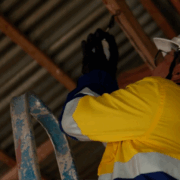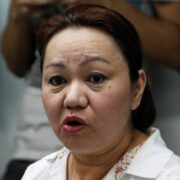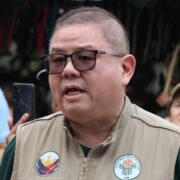More inclusivity for PWDs

The number of persons with disability (PWDs) in the country has grown by 35 percent from over 1.8 million in June 2024 to more than 2.5 million as of June, according to the latest data from the National Council for Disability Affairs (NCDA). Of this number, the NCDA said, 827,189 or about one in three PWDs had physical disabilities. It is estimated that 70 to 80 percent of disabilities are invisible and, therefore, not immediately apparent.
Unfortunately, these “hidden” disabilities have also led to a lot of misunderstandings, biases, stereotypes, and negative perceptions—an indication that there is still very little understanding of PWDs that can manifest in how they are treated, not only by the general public but by establishments. This is not to invalidate legitimate concerns, such as the abuse of PWD privileges or the use of fake IDs by scammers. Relevant agencies must address these issues because they contribute to the negative perception of PWDs.
However, these should not affect the majority who deserve to be seen, heard, served, and enjoy the benefits provided by law without any prejudice.
Republic Act No. 7277, or the Magna Carta for Disabled Persons, enacted in 1992, provides rights and privileges for PWDs, such as access to quality education and health services. It also protects them from discrimination in employment, transportation, and the use of public accommodations, among others.
Invisible disabilities
RA 9442, signed into law in 2007, amended RA 7277 and further threshed out PWDs’ benefits, including a 20-percent discount on medicines, business establishments, diagnostic and laboratory fees, domestic air and sea travel, public transport, etc. It also requires public and private commercial establishments to provide express lanes for PWDs or give them priority if express lanes are unavailable.
These priority lanes, for one, have often been a source of grievance for being abused by people claiming to be PWDs but who do not have disabilities. While some of these complaints may be legitimate, many can also be rooted in biases, expecting PWDs to exhibit physical indications of their disabilities.
But not all disabilities, as has been pointed out many times, are visible. Examples of invisible disabilities are mental health conditions (depression, anxiety, bipolar disorder, PTSD, and schizophrenia), chronic illnesses (diabetes, asthma, Crohn’s disease, and lupus), neurological conditions (multiple sclerosis and Parkinson’s disease), learning disabilities (dyslexia and ADHD), and sensory impairments (hearing loss or visual impairments that are not severe enough to require assistive devices). In short, not all PWDs would be in a wheelchair or using a cane to alert people to their disabilities.
Sustainability of businesses
Per the NCDA report, invisible disability types among Filipino PWDs include speech impairment (335,763); psychosocial disability (314,210); visual disability (251,302); mental disability (152,762); intellectual disability (137,491); deaf/hard of hearing (129,021); cancer (110,880); learning disability (102,623); and rare disease (49,112).
The Restaurant Owners of the Philippines in February said the use of fake PWD IDs is “crippling” the restaurant industry because the mandated 20-percent discount was taking a toll, especially on small and family-run restaurants, since businesses—not the government—shoulder the cost.
Establishments do have reason to complain, given the state of the economy. But, per RA 9442, they can claim these discounts as tax deductions, although business owners said this is not enough to cover their costs. On the part of the government, it should reassess the PWD law and balance between its mandate to protect PWDs’ rights and how it affects the sustainability of businesses.
False assumptions
Last year, President Marcos issued Proclamation No. 597 declaring every July 17 to 23 as National Disability Rights Week. The government should maximize this opportunity to promote a better understanding of PWDs and push for more inclusivity in society. This includes providing them with equal employment opportunities.
The Technical Education and Skills Development Authority said only 57 percent of PWDs in the Philippines were employed in 2020. Despite the passage of RA 9442, many PWDs still find themselves being discriminated against because of false assumptions that they cannot handle workloads or that it would cost companies a lot to hire them.
Based on the 2016 Philippine Statistics Authority data, manufacturing employed the highest number of PWDs at 34.5 percent, followed by education (11.8 percent) and wholesale and retail trade (9.4 percent).
PWDs continue to face many challenges that abled people often take for granted. Given their growing number, their sector must have adequate representation in policymaking to ensure that their participation in nation-building is not hindered by society’s disability to acknowledge and embrace their rights.





















Deforestation is climate action’s blind spot